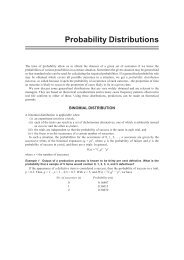International-Business-Dr-R-Chandran-E-book
International-Business-Dr-R-Chandran-E-book
International-Business-Dr-R-Chandran-E-book
You also want an ePaper? Increase the reach of your titles
YUMPU automatically turns print PDFs into web optimized ePapers that Google loves.
• Local Currency Financing<br />
• Municipal Finance<br />
• Trade Finance<br />
IDA<br />
203<br />
<strong>International</strong> <strong>Business</strong>- <strong>Dr</strong>. R. <strong>Chandran</strong><br />
The <strong>International</strong> Development Asso- ciation (IDA) is the part of the World<br />
Bank that helps the world’s poorest countries. Established in 1960, IDA<br />
aims to reduce poverty by providing interest-free loans and grants for<br />
programs that boost economic growth, reduce inequalities and improve<br />
people’s living conditions.<br />
IDA complements the World Bank’s other lending arm—the <strong>International</strong><br />
Bank for Reconstruction and Development (IBRD)—which serves middleincome<br />
countries with capital investment and advisory services. IBRD and<br />
IDA share the same staff and headquarters and evaluate projects with the<br />
same rigorous standards.<br />
IDA is one of the largest sources of assistance for the world’s 80 poorest<br />
countries, 39 of which are in Africa. It is the single largest source of donor<br />
funds for basic social services in the poorest countries.<br />
IDA lends money (known as credits) on concessional terms. This means that<br />
IDA credits have no interest charge and repayments are stretched over 35 to<br />
40 years, including a 10-year grace period.<br />
Eligibility for IDA support depends first and foremost on a country’s relative<br />
poverty, defined as GNI per capita below an established threshold and<br />
updated annually (in fiscal year 2007: US$1,025).<br />
Some countries, such as India, Indonesia and Pakistan, are IDA-eligible<br />
based on per capita income levels, but are also creditworthy for some IBRD<br />
borrowing. They are referred to as “blend” countries.<br />
Eighty-two countries are currently eligible to borrow from IDA. Together,<br />
these countries are home to 2.5 billion people, half of the total population of<br />
the developing world. An estimated 1.5 billion people there survive on<br />
incomes of US$2 or less a day.<br />
Only for Private Circulation





